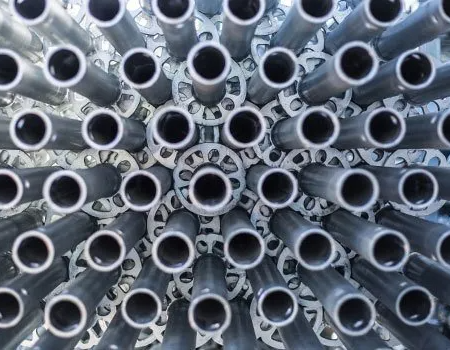
The specifications and advantages of ringlock scaffolding are as follows:
1. Ringlock scaffold has reliable bidirectional self-locking capability, which solves the shortage of manual locking of traditional scaffolds.
2. In the process of use, just insert the two ends of the ledger into the corresponding cone hole of the vertical post, and then tap tightly,
and the convenience and quality of the assembly and disassembly are far beyond the current scaffolding in the market.
3. The disassembly speed of ringlock scaffold is 8-10 times that of tube and clamp scaffold, and 4-5 times that of cuplock scaffold.
4. Ringlock scaffolding has no moving parts, and its structure is only composed of ledgers and standards, which solves the problem that
the moving parts on the traditional scaffold are easy to lose and damage, reducing the economic loss of the project.
5. The vertical cross accuracy between the vertical shaft axis and the ledger shaft axis of the ringlock scaffold is high, the force property is
reasonable, and the carrying capacity is 4 times that of the tube and clamp scaffold and 2 times that of the cuplock scaffold. Wheel buckle
scaffold is an advanced scaffold support system at present.
6. There are Q235 plain carbon steel pipes and low alloy high-strength steel pipes to choose from for ringlock scaffolds.

Ringlock scaffold, also called rosette scaffold, is a new type of self-locking socket scaffold, which can be divided into 48 system and 60
support system. It is composed of main components including vertical post, ledger, diagonal brace, base collar, top head, etc. The vertical
post is welded with a rosette, and there are eight holes on the rosette, four for the ledger and four for the diagonal brace. The spacing of
each rosette is 50 cm, and the connection mode of the ledger and diagonal brace is pin-type, which can ensure the stability of the ringlock
scaffolding system.










